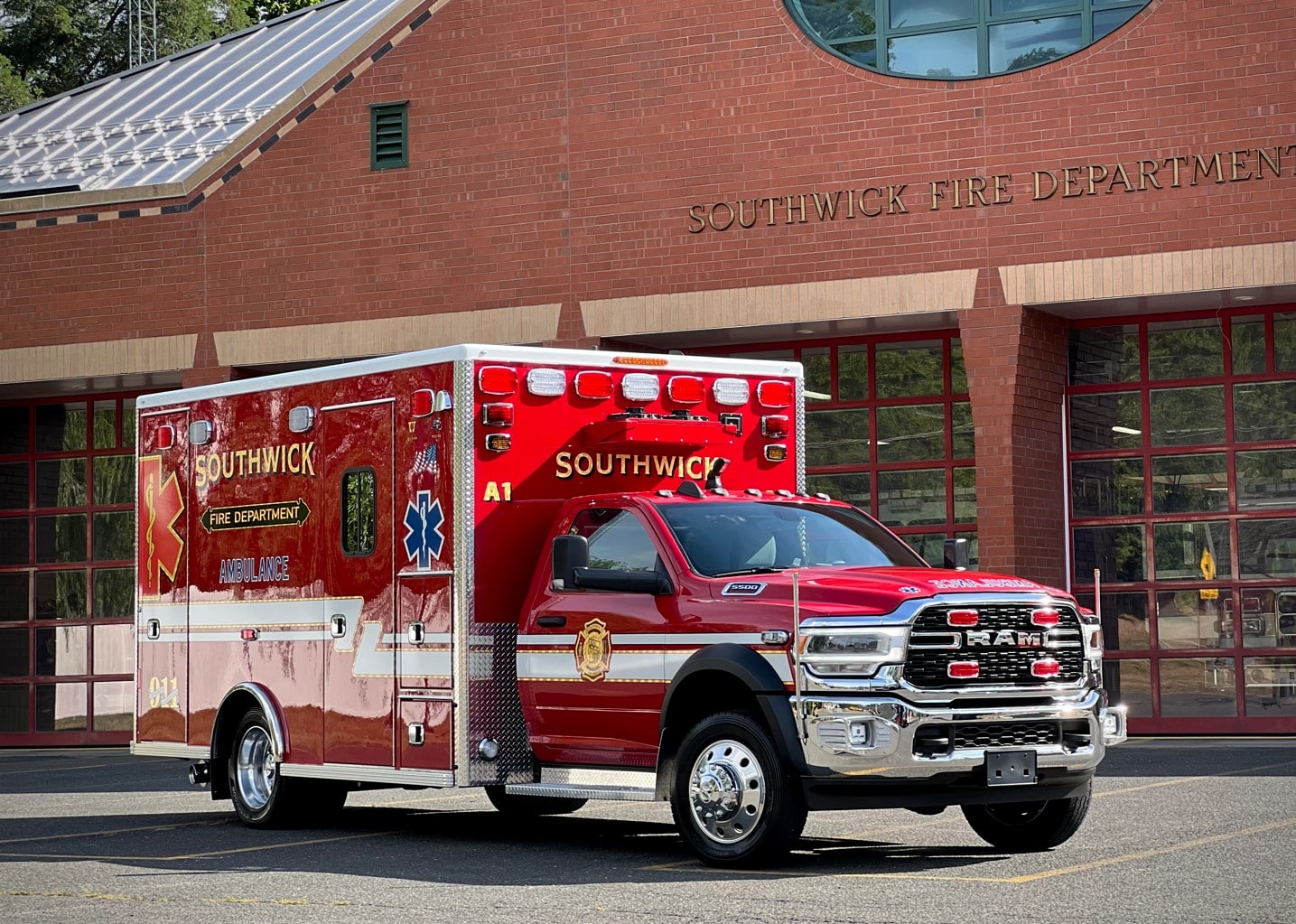WESTFIELD — Westfield State University has announced the launch of its new Paramedic Program, set to begin in April and designed to help meet workforce needs in the region.
Developed in collaboration with key healthcare providers and emergency management organizations, this program addresses the critical regional demand for highly skilled emergency medical professionals.
Included in the collaboration to develop this program were healthcare providers and emergency management organizations Cooley Dickinson Hospital, Holyoke Medical Center, Mercy Medical Center, fire departments from East Longmeadow, Longmeadow, Southwick and Westfield; and EMS providers from Chapin Ambulance, Northern Berkshire EMS and Cataldo Ambulance.
The program is designed to support workforce development by establishing a direct career pathway for Emergency Medical Technicians, or EMTs, to advance to paramedics. Through strong partnerships with employers in the field, Westfield State ensures the curriculum reflects industry standards, equipping students with the skills and expertise needed for immediate employment in emergency medical services.
WSU Paramedic Program Director Michael Marafuga told Reminder Publishing there has been low numbers of applicants entering the EMS field ever since the back end of peak coronavirus pandemic experience.
“A lot of people have not been entering the EMS side of things,” Marafuga said.
A substantial drop off of applicants into EMS services has led to the formation of this program to address the needs being exacerbated in the region. Marafuga added he believes this is mostly due to the experience of the coronavirus pandemic that left many paramedics and staff in healthcare burnt out and feeling the heavy tolls that were experienced by workers in the healthcare field during that time.
“I do believe that. It definitely did not help at all. And with that, the added aspect of EMS calls has actually rose since then. So they’re on a rise, and we have a decreased workforce that’s been happening so we’ve been looking into this for some time now. The university has shown interest for some time, but we really didn’t have any good way of going into it and had no one really spearheading it until Nora [Padykula, interim dean of the Division of Graduate and Continuing Education] and I sat down,” Marafuga said.
Applications are now open for the inaugural class starting April 15. Prospective students can visit westfield.ma.edu/paramedic for detailed admission requirements and program specifics.
Marafuga added that the creation of this program is also an evolutionary step for the university’s programming and curriculum offerings for people seeking to become paramedics and medical first responders.
“Our collaboration between the different disciplines within the school, between athletic training, sports medicine and the EMT program right now, we already do simulations with them, and we wanted to expand it into nursing and potentially a PA program. Then with the paramedic, it’s just an additional step in that collaboration,” he said.
Students will benefit from a comprehensive curriculum, expert faculty and state-of-the-art training facilities. The program includes one year of classroom instruction followed by clinical, field and capstone internships, and can be completed in 12-18 months with an accelerated track.
Marafuga said while the coronavirus pandemic exacerbated many issues with fielding the necessary amount of professional paramedic staff in the region, another big concern is there are not enough training institutions in the region and this new one at the university will also help address that issue.
“There’s not enough training institutions,” Marafuga said. “There’s one pretty far from us in Greenfield so that is kind of a hike for a lot of people around here. There [are] two ambulance services within the area that provide EMS training, but mostly their applicants are in house, so it kind of leads a lot of fire departments and other people looking to advance their careers either having to go far or go to one of these other services. So, I think we’re located in a perfect spot for this.”
Marafuga said being in the next step of pre-hospital care, many of the people who will enter this program are already working on ambulances in some capacity. Others may be trying to advance their career such as a private ambulance service employee looking to advance paramedic level in order to work for a fire department. Or they could already be on the fire department as an EMT, and they need to advance to the paramedic level.
“That’s another bottleneck area, is not being able to train that many people,” Marafuga said.
To meet the diverse needs of working students, the program offers an optional hybrid live lecture enabling remote participation with the in-person classes. Hands on skills labs are hosted in person.
Marafuga added the influx of newly ready-to-go paramedics will help address the current needs of the region, but while the program has staying power, more assistance is needed long-term in order to meet the growing demands for paramedics in the region. With that being said, Marafuga said new strategies and ideas will need to be implemented into the field as communities work together to address the workforce need.
“It’s an issue that we do have to consider with public health and healthcare in general. But the other aspect is community paramedicine, or mobile integrated health. This is where instead of going to the emergency room for every treatment, a paramedic can come to your house and treat you. They speak with a doctor, they provide more treatments than a normal paramedic could do, and its essentially an urgent care or light ER visit without having to be transported,” Marafuga said.
He added, “If it works correctly, it’s preventing 911 calls and ER visits. They can do blood work, they can do urine analysis, they can do a lot of antibiotics. A lot of different types of things like respiratory elements and urinary tract infections can be treated at home without having to take the patient out of the house and treated in their own environment. A prescription is written, some of the medications are given then if needed, or prescription goes to pharmacy by the doctor the paramedic is working with.”
Marafuga said community paramedicine is one approach that may be needed to be put into action in the region and hopefully this program can help assist workers in being set to become a professional paramedic with the ability to adapt to an alternative approach in healthcare.
“It’s a huge cost saving for the patient themselves who is our number one target, and it just saves so many resources down the road as well,” he added.
Marafuga said Westfield State was the “perfect” location to offer this program, and he hopes those looking to become professional paramedics in the region are able to take advantage of the opportunity.
“We’re trying to focus on for the future,” he shared. “We’re focusing a lot on mental wellbeing of the paramedic and provider, preventing burnout and then looking to future mobile integrated health stuff.”
To apply or learn more about Westfield State’s new Paramedic Program, visit westfield.ma.edu/paramedic.


